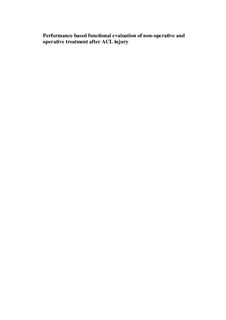| dc.contributor.author | Moksnes, Håvard | |
| dc.contributor.author | Risberg, May Arna | |
| dc.date.accessioned | 2009-06-19T08:14:40Z | |
| dc.date.issued | 2008-05-28 | |
| dc.identifier | Seksjon for idrettsmedisinske fag / Department of Sports Medicine | |
| dc.identifier.citation | Scandinavian Journal of Medicine & Science in Sports. 2008, 19(3), 345-355 | en |
| dc.identifier.issn | 0905-7188 | |
| dc.identifier.uri | http://hdl.handle.net/11250/170469 | |
| dc.description | Brage finner du siste tekst-versjon av artikkelen, og den kan inneholde ubetydelige forskjeller fra forlagets pdf-versjon. Forlagets pdf-versjon finner du på www.wiley.com: http://dx.doi.org/10.1111/j.1600-0838.2008.00816.x / In Brage you'll find the final text version of the article, and it may contain insignificant differences from the journal's pdf version. The definitive version is available at www.wiley.com: http://dx.doi.org/10.1111/j.1600-0838.2008.00816.x | en |
| dc.description.abstract | Highly active anterior cruciate ligament (ACL)-injured patients are usually recommended surgical treatment as the primary intervention. The objective of this study was to compare the functional outcome in a cohort of individuals after non-operative treatment to individuals after surgical treatment at a 1-year follow-up. One hundred and twenty-five subjects with a mean age of 27.2 years (±8.6 years), and participating in level I or II activities were included. Baseline and 1-year follow-up examination included four single-legged hop tests, IKDC 2000, KOS-ADLS, KT-1000 knee arthrometer measurement, VAS, episodes of giving way, and activity level. Fifty-one percent went through non-operative treatment. Non-operated subjects performed significantly better on two of the four single-legged hop tests compared with the ACL-reconstructed subjects at the 1-year follow-up. No other differences were observed. Both groups performed an average >90% compared with their uninjured leg on all single-legged hop tests at the 1-year follow-up. The IKCD 2000 scores in the non-operated and ACL-reconstructed group were on average 86 and 87. ACL-injured subjects should be informed of the possibility of success after non-operative treatment, but future studies are needed to determine significant predictive factors for success for non-operative and surgically treated individuals. | en |
| dc.format.extent | 92924 bytes | |
| dc.format.mimetype | application/pdf | |
| dc.language.iso | eng | en |
| dc.publisher | John Wiley & Sons | en |
| dc.subject | knee | en |
| dc.subject | prospective | en |
| dc.subject | hop tests | en |
| dc.subject | IKDC | en |
| dc.subject | return to sport | en |
| dc.subject | activity level | en |
| dc.subject | reconstruction | en |
| dc.title | Performance-based functional evaluation of non-operative and operative treatment after anterior cruciate ligament injury | en |
| dc.type | Peer reviewed | en |
| dc.type | Journal article | en |
| dc.subject.nsi | VDP::Social science: 200::Social science in sports: 330::Other subjects within physical education: 339 | en |
| dc.source.pagenumber | 345-355 | en |
| dc.source.volume | 19 | en |
| dc.source.journal | Scandinavian Journal of Medicine & Science in Sports | en |
| dc.source.issue | 3 | en |
